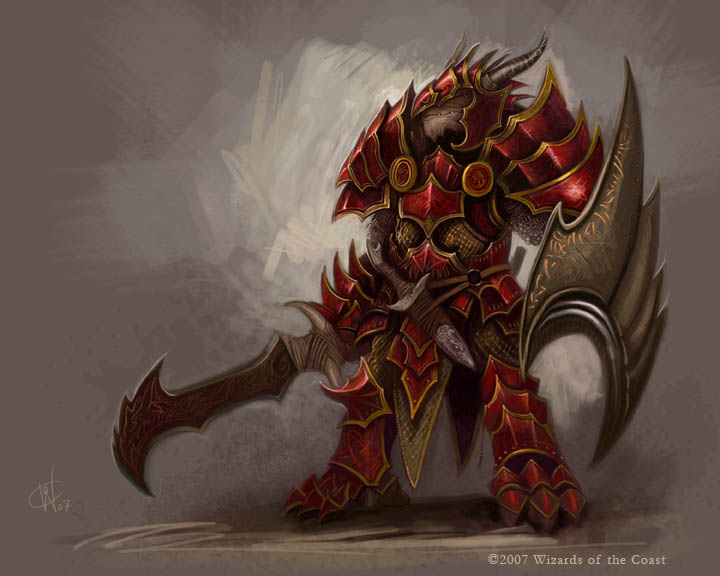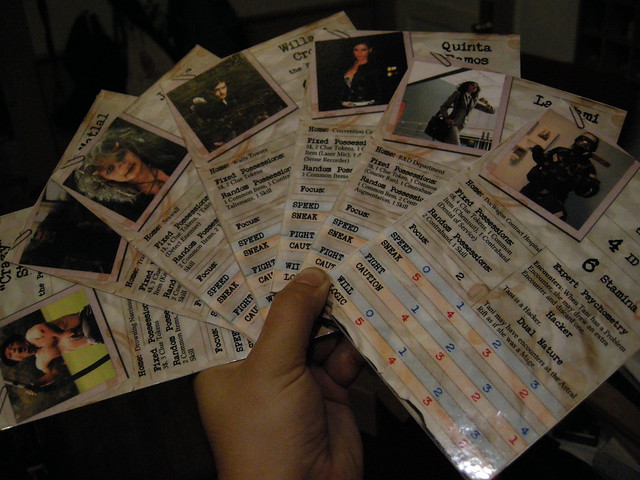So. You've gotten all of your books together and you're ready to pump out a new edition of D&D. Now you're just wondering how you are going to advertise it. Well, hang on to your shorts, because Daddy Lago has FINALLY scoured through all of the thread and has compressed everything into an advertising primer. So no wading through 30 pages of board-post to see what I have on my mind.
You start your marketing 6 months in advance of the release date. If you start too soon, you won't build up enough hype and word of mouth. Also, depending on how badly 4th Edition did going out the door, releasing things too soon will produce skepticism. I personally recommend waiting at least a year between the 'fall' of 4th Edition and when you start releasing word of 5th Edition. Enough time for the memory of failure to die down and for fanboy egos to get assauged. This means that there will be an 18 month gap between editions. Now I know this is a really long time and honestly it is. The problem is that 4E has cried wolf so many times with their revisions that even if a 5E came out it would still be suffering from the hype backlash of its precedessor. So sit on the IP for awhile, even if you've done the work way in advance. Of course, since corporations are greedy motherfuckers who kill golden geese left and right, you might not have enough time between the 'death' of 4E and the release of 5E to let time wash out the awful taste. You will still seriously need about a year of work, though. 5 intense months creating a product and a few books to go along with it and another two months doing rigorous playtesting.
Initial Release Schedule and Translation
But anyway. Short-sighted greediness or no, you're WotC and have created the final drafts of your books, complete with playtesting. Good lord, don't forget the playtesting. They don't dare go to the presses without the following available to be mass-produced:
- All three core rulebooks.
- $20 boxed set.
- Campaign setting books for Forgotten Realms, Dragonlance, Record of Lodoss War/Slayers or whatever hot heroic fantasy anime is out there (get the rights to the IP), Planescape, Ravenloft, and Dark Sun pre-written. Honestly, hold off on making a Final Fantasy campaign setting, otherwise you will get jeers from people complaining about you being too pandering and too video-gamey. You do want to make a Final Fantasy Campaign Setting, but you're going to release that after your edition establishes itself. Basically, your 'New Challenger' setting is something to reel in the weeaboos without giving the grognards ammunition to go 'they want to kill classic D&D with this video game shit!' So pick a license that's been around for at least a decade and has a big fanbase before publishing it. Again, I recommend RoLW, Slayers, Berserk, or even Magic Knight Rayearth.
- Monster Manual II. Don't call it Monster Manual II, though. Give it some less lazy title like 'Monster Manual: Challenge of the Evil Gods'.
- Arms and Equipment Guide. This actually needs to be released fairly early in, before people settle into their habits and will only notice new books because of power creep. To limit the amount of power creep and give it basket weaver cred you'll want to do 'obscure' weapons and also have sections on mounts and fortress building and whatnot.
- D&D Iconic Villain Manual/Enemies and Allies guide. We talked about this earlier threads and I'll be happy to expand if you have questions.
- 9 months of promotional comics, Exalted-style, for the new D&D edition. You will need to release a new comic at a rate of no more than two weeks between issues. So at least 18. Recommended length? You see those Ultimate Spiderman or Ultimates softcover books? The total volume of content you should have needs to fill up two of those books.
- A couple of setting-agnostic campaign expansion books. Books that can be copy-pasted into any campaign, like Stormwrack and Frostburn.
Fanning the Advertising Flames
The D&D promotional comic gets released six months ahead of the release date (you DO have a promotional comic, right?). Release the new issues on your website or through Drive-Thru-RPG.com. The comic will continue three months after the release of the core rulebooks, when the initial edition hype is at its highest. If the comic is still a thing by then, release more issues. If it's not a thing, then don't worry about it. You can just stop it.
Getting the fanboys on board. WotC should hit all of the hot 'nerd' websites that have an easily-identifiable personality to go along with it and invite them to play in sessions. You can cater to their egos more by allowing them to stick their own dicks into your product (so Tycho's witchalok or whatever actually becomes an iconic villain in your manual; thank god for .pdfs). I think that it's at least possible to get Penny Arcade, Giant in the Playground, Robot Chicken, and Girl Genius as long as you don't push too hard. I would put Brian Clevinger on that short list, as he's a 3.5E D&D fan, but his traffic has dropped off immensely since finishing that 8-Bit Theatre comic. Oh, well. The point is that they get exclusive previews of material that filters down to the rest of the internets to build hype and interest.
WotC then releases their videogames to circulate around the Internet. You hit the big bad gaming sites with these. At this point you're not trying to recreate D&D in a videogame like with Baldur's Gate or Neverwinter Nights. Your goal is advertisement, namely getting people hyped up for Dungeons and Dragons. You showcase the new classes and races and make as many references to D&D-specific cliches as possible.
- Facebook app (or whatever is the popular social networking app) like they had for 4E, only not ass and also doing more to highlight specific edition features.
- Lightweight flash RPG for the 'hardcore' set in the vein of Monster's Lair: Book of Dread. That is, an infinitely grindy cRPG that has D&D tropes slathered all over it.
- Lightweight 'puzzle' application-game to appeal to people who aren't into ultra-grindy cRPGs. This is pretty much a pure marketing gimmick. I suggest getting something like Jewel Quest or Bejeweled and slathering creamy D&D dicksauce all over it. So it'll look something like Puzzle Quest. The advantage of this is that puzzle games are very profitable for what they cost.
For the latter two, again, you will need to do translations for these. However, since these kinds of video games have much less text to them than books, it shouldn't take as long or be as expensive. Release them to non-English gaming sites and let them stew for awhile.
Ongoing management of your property.
Now the D&D Insider thing. This is one of the few areas in which I have to give 4th Edition props for handling correctly. Frankly, I wouldn't change much of what 4E did with that thing, with a couple of caveats.
- Having a subscription to D&D Insider allows you to edit the D&D wiki. Without it, all you can do is read it. It might seem counter-intuitive at first glance to do this, but remember that you want your biggest fans and hardcore fanboys to mostly be working on that. And those people are going to have a DDI subscription anyway.
- Dungeon Magazine needs a hardcopy as WELL as an online subcription.
- You need to have the character visualizer out. I honestly don't agree with Frank and Koumei and them about the 2D paper dolls; people are willing to suspend their disbelief about how crappy the 3D models are as long as you get to rotate your character around and look at your barbarian's armored ass, because that's precisely what they did with City of Heroes. And that game looked like ass even for its time. The models don't need to be Oblivion-level quality. They just need to be Soul Calibur 2 quality. If that's too expensive, then you should be able to do Final Fantasy 8 quality.
- Most vitally, you will need to have some kind of tabletop toolkit created that allows people to directly import their models from the character visualizer and their character sheets onto the game. The application WILL need to be connected to the Internet and WILL need to be able to be played on a smartphone or an iPad or whatever the fuck. This is ground zero for the long-term marketability of your franchise, if you can't get this done then even if 5E is a success it will not be able to grow the pie higher.
Secondly, set up an official Dungeons and Dragons wiki. Honestly, I don't know why the hell 4E didn't do so. Wikia makes wikis easily and the existence of like three separate D&D wikis shows that people do actually want them in. The wiki will mostly be able to be freely edited by the public at large. You don't even need to do that much quality control, because the nature of wikis have people fighting over accuracy to ensure nerd cred. Which takes some of the pressure off of you. The only thing that the sysops should be doing pretty much is ensuring that people don't post major spoilers of your class. Posting a description and some generic crunch (i.e. Ranger, Striker Role, favors STR/WIS/DEX, has the Prime Shot/Hunter's Quarry/Fighting Style talent trees, etc.) is fine, but if it gets to the point where it's providing major spoilers you've gone too far. But again, Wiki Magic will pretty much take care of this for you. Once you got a D&D wiki up and running, you will use that as the homepage of your Sage FAQ. Seriously, that should be the major feature of the wiki. Furthermore, the person who has the title 'Sage' will be the lead developer of your product for added gravitas. Don't slather his name all over the product, but people should seriously be able to point to a name when some skeptic over a rules interpretation asks 'who said this thing?'
Thirdly, worry about customer service. 4E overlooked this to their detriment, but having a customer service that is respected adds credibility to the product and thus the writers. It's really not that hard. So here are your basic rules of customer service.
0) People cannot ask questions without detailing the book and the relevant pages (if necessary) in order to evaluate the question.
1) Go to the index and see if the question has already been answered. If it has been answered then repeat the same canned answer unless it blatantly doesn't make sense or is wrong.
2) If you get asked anything other than a softball question (how do I calculate the hit points of a 10th level wizard), index that shit immediately along with your answer. If it's a repeat question, mark up the number of times that question was asked. If it's a good, but out-of-left-field question like, I dunno, calculating the swim speed of a giant, you should mark this with a special symbol or something.
3) The Sage will go through the customer service index every alloted amount of time and pick out the most-asked questions or questions marked 'strangely good question' and answer those questions. He will immediately post those answers onto the FAQ and also onto the D&D wiki.
4) The Sage has the final word. He's the only one allowed to contradict customer service, a privilege that he should only exercise rarely. If the Sage does contradict customer service then the Sage should make note of this in order to maintain credibility.
The Piece De Resistance: Your Boxed Set
Now. The boxed set itself. I mentioned in another thread that the game should take a lot of its cues from Dragonstrike. I maintain that assertion. The boxed set should have:
- Miniature versions of the monster manual, dungeon master's guide, and the player's handbook that goes to level 5 or so.
- In the player's handbook, at the minimum you will give people the choice of choosing their weapon, some generic equipment (like rope), their race, their class, their skills, and also their background. Don't make it too involved; the backgrounds should be things like 'war profiteer' or 'caring healer'. That way people will have a sense of ownership of their character beyond 'I'm playing a board game piece'.
- One booklet that has six fully-contained adventures that the DM doesn't have to prep. One of them should be long enough to be a campaign, like Keep on the Shadowfell. The other five, one for each board, should be able to be finished in an evening--stuff like 'Assault on the Necromancer's Castle' or 'Orcs and Mercenaries have invaded the town!'. The evening-length adventures can seriously be nothing but straight-up combat with a few opportunities for roleplay. The campaign stuff should definitely be more involved. It should have a skill challenge, opportunities for picking up treasure, and enough encounters so that people level up at least once in the middle of it. It should also use several of the boards.
- Dice. A d4, four d6s, a d8, a d10, a d12 (sigh), and two d20s. All of them color-coded.
- A set of premade player's cards for each of the iconics for people who don't want to build a character. They can still build a character, but if someone is just popping on you can hand them the card.
- 1 cloth map of the 'world' which on the back has some cool D&D picture. You ever get the Neverwinter Nights special edition box? Well, that.
- Three cardboard boards, front and back. Having played in some 3E and 4E games with newbie DMs both online and offline, I can tell you that one of the biggest stumbling blocks and 'oh god why do I have to do this' are coming up with maps. So DragonStrike style, you should have: A town board, a forest board, a dungeon board, a temple board, a cavern board, and a wrecked city board.
- Color-coded plastic figurines. You provide 8 plastic figurines, each for the heroic iconics. All of the heroic iconics are white. Then you have approx. 30 'bad guy' figurines, about 2/3rds the size of what DragonStrike used. Here's my suggested spread:
2 wizards, one black and one red.
2 giants, both green.
1 dragon, dark red.
1 of each elemental (so four), which are red, brown, yellow, and blue respectively.
5 lightly-armored generic humanoid figures that have their features obscured, all of them light-blue.
3 heavily-armored generic humanoid figures that have their features obscured, all of them light-green.
3 skeletons, all of them grey.
3 zombies, both dark green.
3 wolves, all black.
1 mini-beholder, which will be yellow.
3 goblins, green.
3 orcs, grey-green. - Multi-media CD on it. It will have all of the issues of the D&D comic up to that point on it. It will also have some video playthroughs of some of the campaigns you did while showing your product to the above nerds I mentioned. Finally, it comes with a subscription to D&D Insider and a couple of power cards unique to people who picked up this adventure.
The boxed set should seriously both be able to have a set of 'pick up and play' adventures with no real ramifications to it. These pick-up-and-play adventures should be stacked in favor of the player, that way people don't get all crybaby that they had to face a 'real' challenge. They shouldn't be too stacked, though, because you don't want to give the impression that they're some kind of uber-badasses. In order to wean your players after getting them in the mood, the main event of your boxed set should advertise itself as being difficult and badass and questioning your president-rescuing abilities.
Your Bearing and Conduct While Advertising
So when 5th Edition comes out, there are going to be lots of hurt feelings and tears over how the previous editions went. You will have a lot of 3tards and 4rries just waiting to pounce on every bit of bad/questionable news in order to spread their bile. So, here's a general primer:
1) Advertise the glittering generalities first, advertise the hard numbers when the edition is about to be released. The Skill Challenge stuff was able to briefly fool us into thinking that it would be good because they didn't release their numbers until the very end. If they did the numbers first then even that would have failed.
When you advertise your new set of classes and races, don't release numbers other than the bare minimum. Create descriptions of what they do. Throw in a bunch of pithy quotes. Show off your promotional artwork. You do not want people to go 'oh, this new barbarian only does 1d6+4 damage, my old one did 2d6+9 at first level! 5E sucks!'. Even though that's not accurate, you still don't want this meme to catch on.
2) Avoid badmouthing fans of previous editions. Your advertisers should go out of their way to ingratiate themselves onto their audience, many of them being jilted fanboys. Whenever possible, you should throw a bone to ideas of the other editions: 'We really liked the idea behind Skill Challenges but we also wanted to make them more action-oriented like you see in the movies. This is why we made this system' or 'We really thought that the idea behind kits in 2E were cool; it makes your fighter different from all of the other fighters immediately. So in addition of combining them with prestige classes and epic destinies, they're now in the game'.
3) If you have to slay a sacred cow, you need to give a good reason for why you're doing so. If you need to announce a major departure from how things were done previously, you need to sugarcoat and go into depth as to why you did that. For example, when you state why you need to get rid of magical item plusses, state that plain ol' math bonuses made players cynical towards the coolness of magical items. People love swords that transform into giant eagles and staves which shoot bolts of lightning. In return for getting rid of plussed items, we were able to introduce a lot more items and keep them more relevant because they're not competing against a math bonus.
4) Use your playtesting sessions to ease over the teething pains of new mechanics and slain cows. Filmed playtesting sessions are good for this because they immediately allow you to A) change the subject and B) show people that the world doesn't end if they don't get exactly what they want and C) show them what new awesome thing you had in the wings for them. Playtesting sessions are probably the best place to ease people into the pain of going to Winds of Fate and getting rid of plussed magical items.
5) If people are going to ask whether something is going to be in the game, be honest but still sugarcoat. If someone asks you point-blank if rolled hit points are going to be in, just say no. There's no use being evasive, because people will find out. But if people ask 'is Eberron going to come back in vogue' then you can tell them that even though in the immediate product line you don't have plans if the edition does well enough then there will be some Eberron material maybe.







